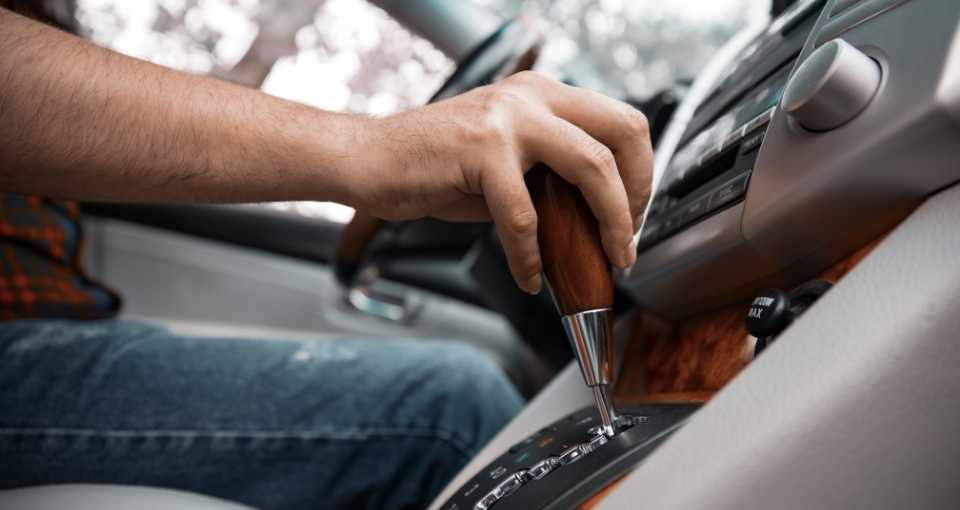This question is asked by many car owners, especially by those who like to drive their cars sportively and listen to their engines roar. Some of them also ask this question because they don’t own a car with any kind of launch control system that enables them to accelerate fast from a standing start.
The best way to achieve great acceleration when a car is stopped is to do so with a revved up engine. This is very easy to do in manual cars; you just engage first gear, throttle up your engine while you press the clutch and you are ready to go, but doing this in automatic cars is pretty difficult, because they don’t have a clutch!
Revving the engine while in neutral or park excessively could cause overheating. While subtle revs is not going to cause any damage. Neutral bombing on the other hand can wreak havoc on your transmission gears.
As I answer this question, I’m going to give you some tips about what practices you should avoid in order to prevent damage, excessive, and/or premature wear to your automatic transmission.
If you rev your car in neutral or park without suddenly engaging “drive”, and you just let the engine slow down until it idles, and then you switch to “drive”, it’s the same as when you drive your car normally.
You have your engine idling and you have to put it in “drive” or “sport” to depart. The only precaution that you have to take is to avoid reaching really high RPMs, stay far from the tachometer’s red line and, if your car has a rev limiter, it’s not convenient to force the engine to the point when the injection cuts off.
All these things put your engine under a lot of stress and can do real harm to the engine’s internal parts. You also have to avoid doing this when the engine is cold, as when oil hasn’t reached its optimum temperature it doesn’t lubricate the engine parts well. Lack of proper lubrication can cause premature wear and it can even lead to serious damage.
About the gearbox, when you rev your engine when the car is stopped, you just have to be careful about temperatures. If you do this for a long time, your transmission oil could overheat, which is not good for your gearbox’s health.
If for some reason you decide to do this, do it when the engine is warm, and don’t force it for excessive long periods of time; a little more than a minute may be too much time. It’s something that shouldn’t be done for more than a couple of seconds.
Also, some drivers rev up the engine and then suddenly engage “drive” to departure – a practice that is commonly referred to as “launching the vehicle”. This is extremely harmful to the transmission components such as the clutch packs, clutch packs and bands that are the components used by transmissions to shift gears.
These parts are not made to endure sudden changes of speed and torque, and launching your vehicle will make them wear out and lose their ability to hold friction, which is going to make them slip, meaning that you will need to have them replaced.
Check your owner’s manual to find out if your car has a “launch control” system. Some models, especially sports cars, come prepared to be launched.
Launch Control is software that some cars use to control acceleration. Making it as smooth as possible without tire slipping and over-revving.
If you follow the procedure properly, it won’t cause any harm to your transmission because it has been designed to endure this kind of use, and these models have advanced electronics that are aware of torque and other factors that prevent damages.

What You Should Not Do With an Automatic Transmission
- Never engage reverse while the car is still running. This has almost the same effect as launching your car. Doing this causes a sudden change of direction of the transmission components and puts them under a lot of stress. It’s always a good practice to fully stop your car while it’s in “drive” and then switch to park or reverse. The same goes when you are driving in reverse and you need to go forward. It’s advisable to fully stop the car before you put the gearbox lever in “drive”.
- Never put the gearbox lever into “park” while the car is still moving. When a transmission is in “park”, it’s locked; this is meant to prevent the vehicle from rolling. It’s an aid to the parking brake. The transmission component that prevents a vehicle from moving while it’s in “park” is a notch called “locking pin”. This part suffers when it’s forced into its position while the car is still running; that’s why the car needs to be fully stopped before you put it in “park”.
- The “park” feature of automatic transmission is a good safety device to keep the vehicle stopped, but remember to always use your parking brake too. In fact, when you are about to park your car, it’s better to engage your parking brake, and then switch your transmission to “park”. In this way, the weight of the vehicle will be held by the brakes, and the transmission will be there as a backup. If you leave the vehicle in “park” without using your parking brake, all the weight will lean onto the transmission, more precisely the locking pawl or locking pin. This part can wear out or eventually break if it’s always used to support the weight of the car without the aid of the handbrake.
- If you are going to be stopped for a long time; for example, if you are stuck in a traffic jam and you are not sure about how long you will be unable to move, or if you had to pull over for some reason and you are not going to end your journey there, it’s better to put your car in “park” and/or to turn it off. Keeping the car in “drive” when you are stopped can make your gearbox oil to overheat.
- When you reach a stop light, just leave the gearbox lever in “drive”. It will prevent your transmission from working unnecessarily. A stop light doesn’t last long enough to produce any overheating, and going from “drive” to “neutral” or to “park” and back every time you reach a stop light will cause your transmission to wear out.
- Keep your automatic transmission dry. If you are not driving an all terrain vehicle and you reach a flooded area, try to find an alternative road. Water and mechanical parts don’t get along well. Avoid contact with water and humidity as much as possible. It is always a good thing to bear in mind to keep your engine and transmission healthy.
- Avoid towing an excessive load. Towing puts a lot of strain on your transmission, which can cause damage and overheat. Check your car owners’ manual to see how many pounds your car may safely pull. Even if you are towing a trailer under the vehicle’s manufacturer’s specs, if it’s not a utility vehicle, try to avoid towing if possible.
Transmission Maintenance and Fluid Changes
As a piece of additional advice, don’t forget to change your transmission oil at the fixed intervals. Some transmissions require changing the transmission fluid filter/s as well. Please check your vehicle owner’s manual to see the transmission service intervals.
Transmission change or flush can cost anywhere from $150 – $275. CVT (Continuously Variable Transmission) transmissions cost more to flush around $250 – $275.
At every engine’s oil change check for leakages in your transmission. If any leakage is detected, check the transmission fluid levels. Running your car with low transmission oil could be catastrophic.
Be aware of strange noises such as car shaking, shuddering, stalling, slipping gears or any other symptom that might suggest that you are having a problem with your transmission. Take the car to the shop before these symptoms get worse.
Automatic transmissions are expensive to replace, to repair and can be problematic if they are neglected. I hope these tips help you to keep your transmission healthy and in excellent running conditions for the rest of your vehicle’s life time.
